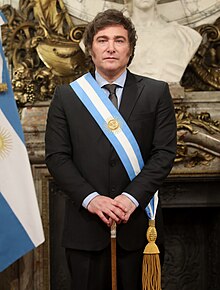Argentina has had many different types of heads of state, as well as many different types of government. During pre-Columbian times, most of the territories that today form Argentina were inhabited by Amerindian peoples without any centralized government, with the exception of the Inca subjects of the Northwest and Cuyo regions. During the Spanish colonization of the Americas, the King of Spain retained the ultimate authority over the territories conquered in the New World, appointing viceroys for local government. The territories that would later become Argentina were first part of the Viceroyalty of Peru and then the Viceroyalty of the Río de la Plata. The May Revolution started the Argentine War of Independence by replacing the viceroy Baltasar Hidalgo de Cisneros with the first national government. It was the Primera Junta, a junta of several members, which would grow into the Junta Grande with the incorporation of provincial deputies. The size of the juntas gave room to internal political disputes among their members, so they were replaced by the First and Second Triumvirate, of three members. The Assembly of the Year XIII created a new executive authority, with attributions similar to that of a head of state, called the Supreme Director of the United Provinces of the Río de la Plata. A second Assembly, the Congress of Tucumán, declared independence in 1816 and promulgated the Argentine Constitution of 1819. However, this constitution was repealed during armed conflicts between the central government and the Federal League Provinces. This started a period known as the Anarchy of the Year XX, when Argentina lacked any type of head of state.
| President of the Argentine Nation | |
|---|---|
| Presidente de la Nación Argentina | |
 Presidential Standard | |
| Style | Excelentísimo Señor (m) Excelentísima Señora (f) |
| Residence | Casa Rosada (government office) Quinta de Olivos (official residence) Chapadmalal Residence (summer house) |
| Term length | Four years, renewable once |
| Inaugural holder | Bernardino Rivadavia |
| Formation | first: 1826 Constitution current: 1853 Constitution (amended in 1994). |
| Deputy | Vice President |
| Salary | 1,281,328 Argentine pesos[1] (as of December 2022) |
| Website | Office of the President |
There was a new attempt to organize a central government in 1826. A new congress wrote a new constitution and elected Bernardino Rivadavia as president in the process.[2] Rivadavia was the first President of Argentina. However, he resigned shortly after and the 1826 Constitution was repealed. The Argentine provinces then organized themselves as a confederation without a central head of state. In this organization, the governors of Buenos Aires province took some duties such as the payment of external debt or the administration of the foreign relations in the name of all provinces.[3] Those governors were appointed by the Buenos Aires legislature, with the only exception of Juan Lavalle. Juan Manuel de Rosas kept the governor office for seventeen consecutive years until Justo José de Urquiza defeated him at the 1852 Battle of Caseros. Urquiza then called for a new Constitutional Assembly and promulgated the Argentine Constitution of 1853, which is the current Constitution of Argentina through amendments. In 1854, Urquiza became the first President of modern Argentina, acting both as head of government and head of state.[4] However, the Buenos Aires Province had rejected the Constitution and became an independent state until the aftermath of the 1859 Battle of Cepeda, although the internecine conflict continued. Only after the subsequent Battle of Pavón in 1861, the former bonaerense leader Bartolomé Mitre became the first president of a unified Argentine Republic.[5]
The succession line of constitutional presidents run uninterrupted until 1930, when José Félix Uriburu took government through a civic-military coup d'état. For many decades, there was an alternance between legitimate presidents and others that took government through illegitimate means. Those means included coups d'état, but also proscriptions of major political parties[6] and electoral fraud.[6][7] The last coup d'état occurred in 1976 and resulted in the National Reorganization Process, which ended in 1983. The retrospective recognition as presidents or heads of state of any de facto ruler that exercised its authority outside the Constitutional mandate is a controversial and relevant issue in Argentine politics.[8][9][10] However, their government actions were recognized as valid following the de facto government doctrine that used to legitimize them.[11] This doctrine was rejected by the 1994 amendment and would not be applicable for potential future coups. The current head of state is President Javier Milei, who took office on 10 December 2023.
Affiliation keys
| Abbreviation | Party name (English) | Party name (Spanish) | Years | |
|---|---|---|---|---|
| Unitarian | Unitarian Party | Partido Unitario | 1826–1827, 1828–1829 | |
| Federal | Federalist Party | Partido Federal | 1827–1828, 1829–1861 | |
| Liberal | Liberal Party | Partido Liberal | 1862–1868 | |
| — | Independent politician | Político independiente | 1868–1874 | |
| PAN | National Autonomist Party | Partido Autonomista Nacional | 1874–1916 | |
| UCR | Radical Civic Union | Unión Cívica Radical | 1916–1930, 1958–1966, 1983–1989, 1999–2003 | |
| Military | Armed Forces of the Argentine Republic | Fuerzas Armadas de la República Argentina | 1930–1932, 1943–1946, 1955–1958, 1966–1973, 1976–1983 | |
| Concordancia | Concordancia | Concordancia | 1932–1943 | |
| PJ | Justicialist Party | Partido Justicialista | 1946–1955, 1973–1976, 1989–1999, 2003–2015, 2019–2023 | |
| PRO | Republican Proposal | Propuesta Republicana | 2015–2019 | |
| PL | Libertarian Party | Partido Libertario | 2023–present | |
United Provinces of the Río de la Plata (1810–1831)
Junta presidents (1810–1811)
| Portrait | Name (Birth–Death) | Term of office | Notes | R. | ||
|---|---|---|---|---|---|---|
| Start | End | Time in office | ||||
 | Cornelio Saavedra (1759–1829) | 25 May 1810 | 18 December 1810 | President of the Primera Junta, at the beginning of the Argentine War of Independence. He is regarded as the first president of a national government.[12] | 217 days | [13] |
| 18 December 1810 | 26 August 1811 | President of the Junta Grande. Left to serve in the Army of the North. | 140 days | |||
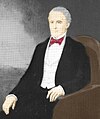 | Domingo Matheu (1765–1831) | 26 August 1811 | 23 September 1811 | President of the Junta Grande, from Saavedra's departure to the dissolution of it. | 13 days | [14] |
Triumvirates (1811–1814)
| First Triumvirate 23 September 1811 – 8 October 1812 | |||
|---|---|---|---|
| 23 September 1811 – 23 March 1812 | 23 March 1812 – 8 October 1812 | ||
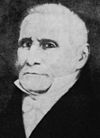 Feliciano Chiclana (1761–1826) | |||
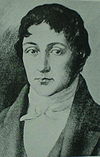 Manuel de Sarratea (1774–1849) | |||
 Juan José Paso (1758–1833) | 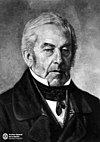 Juan Martín de Pueyrredón (1776–1850) | ||
| Second Triumvirate 8 October 1812 – 31 January 1814 | |||
|---|---|---|---|
| 8 October 1812 – 20 February 1813 | 20 February 1813 – 19 August 1813 | 19 August 1813 – 5 November 1813 | 5 November 1813 – 31 January 1814 |
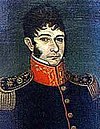 Nicolás Rodríguez Peña (1775–1853) | |||
 Antonio Álvarez Jonte (1784–1820) | 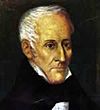 Gervasio Antonio de Posadas (1757–1833) | ||
 Juan José Paso (1758–1833) | 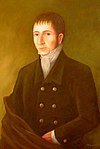 José Julián Pérez (1770–1840) | 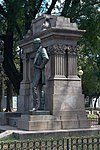 Juan Larrea (1782–1847) | |
Supreme Directors (1814–1820)
| Portrait | Name (Birth–Death) | Term of office | Notes | R. | ||
|---|---|---|---|---|---|---|
| Start | End | Time in office | ||||
 | Gervasio Antonio de Posadas (1757–1833) | 31 January 1814 | 9 January 1815 | 343 days | Chosen by the Assembly of the Year 1813. | [15] |
 | Carlos María de Alvear (1789–1852) | 9 January 1815 | 18 April 1815 | 99 days | Forced to resign by a mutiny. | [16] |
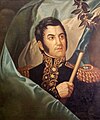   | José de San Martín (1778–1850) Matías de Irigoyen (1781–1839) Manuel de Sarratea (1774–1849) | 18 April 1815 | 20 April 1815 | 2 days | Third Triumvirate. Interim government until the appointment of a new Supreme Director. | |
 | José Rondeau (1773–1844) | 20 April 1815 | 21 April 1815 | 1 day | Appointed successor of Alvear, could not take office because he was in command of the Army of the North | [17] |
 | Ignacio Álvarez Thomas (1787–1857) | 21 April 1815 | 16 April 1816 | 361 days | Acting, for Rondeau. Convened the Congress of Tucumán, that would declare Independence. | [18] |
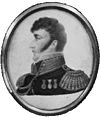 | Antonio González de Balcarce (1774–1819) | 16 April 1816 | 9 July 1816 | 84 days | Interim. | [19] |
 | Juan Martín de Pueyrredón (1776–1850) | 9 July 1816 | 9 June 1819 | 2 years, 335 days | First Argentine Head of State after the Argentine Declaration of Independence. Supported the Crossing of the Andes. | [20] |
 | José Rondeau (1773–1844) | 9 June 1819 | 1 February 1820 | 237 days | Decisively defeated at the Battle of Cepeda by Federalist forces opposed to the 1819 centralist Constitution. | [21] |
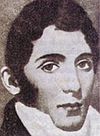 | Juan Pedro Aguirre (1781–1837) | 1 February 1820 | 11 February 1820 | 10 days | Interim. Dissolved the National Congress and endorsed the Buenos Aires Cabildo to choose a Governor for Buenos Aires Province instead of the previous post of Governor Mayor. | |
Governors of Buenos Aires Province managing international relations (1820–1826)
Between 1820 and 1826, the United Provinces functioned as a loose alliance of autonomous provinces put together by pacts and treaties (see Treaty of Pilar, Treaty of Benegas, Quadrilateral Treaty), but lacking any actual central government until the 1825 Constitutional Congress.
| Portrait | Name (Birth–Death) | Term of office | Notes | R. | |
|---|---|---|---|---|---|
| Start | End | ||||
 | Matías de Irigoyen (1781–1839) | 11 February 1820 | 18 February 1820 | He had been Governor Mayor from 9 to 11 February 1820 and was promoted interim as Governor until the appointment of Manuel de Sarratea. | |
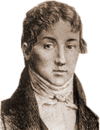 | Manuel de Sarratea (1774–1849) | 18 February 1820 | 6 March 1820 | The political crisis that existed in the country led to his government lacked support from both Buenos Aires and the other provinces. Thus he resigned shortly afterwards. | |
 | Juan Ramón Balcarce (1773–1836) | 6 March 1820 | 11 March 1820 | Interim. Resigned. | |
 | Manuel de Sarratea (1774–1849) | 11 March 1820 | 2 May 1820 | He returned to office after the end of the brief government of Balcarce. The circumstances did not improve and ended up resigning a second time. | |
 | Ildefonso Ramos Mexía (1769–1854) | 2 May 1820 | 20 June 1820 | ||
 | Ildefonso Ramos Mexía and Miguel Estanislao Soler | 20 June 1820 | 23 June 1820 | They took power simultaneously. | |
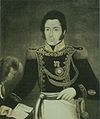 | Miguel Estanislao Soler (1783–1849) | 23 June 1820 | 29 June 1820 | He assumed de facto, after an armed uprising, but his government lasted a few days, when the Board of Representatives appointed Manuel Dorrego. | |
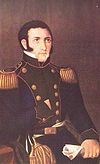 | Manuel Dorrego (1787–1828) | 29 June 1820 | 20 September 1820 | Interim. | |
 | Martín Rodríguez (1771–1845) | 20 September 1820 | 2 April 1824 | He signed the Treaty of Benegas and the Quadrilateral. | |
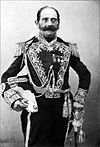 | Juan Gregorio de las Heras (1780–1866) | 2 April 1824 | 7 February 1826 | He called a Constituent Congress that enacted several laws for which the Unitary Republic was proclaimed. He resigned because of that republic. | |
First presidential government (1826–1827)
| Portrait | Name (Birth–Death) | Term of office | Elections | Political party | Notes | R. | ||
|---|---|---|---|---|---|---|---|---|
| Start | End | |||||||
 | Bernardino Rivadavia (1780–1845) | 8 February 1826 | 27 June 1827 | 1826 | Unitarian | Elected by the Constituent Assembly of 1826, before the promulgation of the 1826 constitution.[2] Waged the Cisplatine War. Resigned as the Constitution was rejected by the provinces and the outcome of the war generated popular discontent. | [2]: 23–32 | |
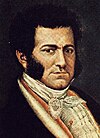 | Vicente López y Planes (1785–1856) | 7 July 1827 | 18 August 1827 | — | Elected as interim president by the Constituent Assembly of 1826. His mandate was limited to close the Assembly and call for elections for a new governor of Buenos Aires. | [2] | ||
Governors of Buenos Aires Province managing international relations (1827–1831)
| Portrait | Name (Birth–Death) | Term of office | Political party | Notes | R. | ||
|---|---|---|---|---|---|---|---|
| Start | End | ||||||
 | Manuel Dorrego (1787–1828) | 18 August 1827 | 1 December 1828 | Federal | Ended the Cisplatine War. Deposed and executed by Juan Lavalle. | [22] | |
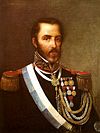 | Juan Lavalle (1797–1841) | 1 December 1828 | 26 June 1829 | Unitarian | Coup d'état. Defeated in battle, resigned under siege | [23] | |
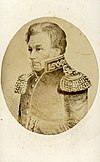 | Juan José Viamonte (1774–1843) | 26 June 1829 | 6 December 1829 | Federal | Interim. | [24] | |
 | Juan Manuel de Rosas (1793–1877) | 6 December 1829 | 4 January 1831 | First term. Convened the Federal Pact and waged war against the Unitarian League. | [25] | ||
Argentine Confederation (1831–1861)
Governors managing international relations (1831–1852)
| Portrait | Name (Birth–Death) | Term of office | Political party | Notes | R. | ||
|---|---|---|---|---|---|---|---|
| Start | End | ||||||
 | Juan Manuel de Rosas (1793–1877) | 4 January 1831 | 5 December 1832 | Federal | Governor of Buenos Aires Province. First term. Convened the Federal Pact and waged war against the Unitarian League. Resigned. | [25] | |
 | Juan Ramón Balcarce (1773–1836) | 5 December 1832 | 4 November 1833 | Governor of Buenos Aires Province. Ousted by the Revolution of the Restorers. | [26] | ||
 | Juan José Viamonte (1774–1843) | 4 November 1833 | 27 June 1834 | Governor of Buenos Aires Province. Interim. | [27] | ||
 | Manuel Vicente Maza (1779–1839) | 27 June 1834 | 7 March 1835 | Governor of Buenos Aires Province. Interim. | [28] | ||
 | Juan Manuel de Rosas (1793–1877) | 7 March 1835 | 3 February 1852 | Governor of Buenos Aires Province with the sum of public power; it is usually considered as a coup. Second term. Waged the Argentine and Uruguayan Civil Wars, the War of the Confederation and the French and Anglo-French blockade of the Río de la Plata. Designated "Supreme Chief of the Argentine Confederation" in 1851. Defeated by Justo José de Urquiza at the Battle of Caseros. Resigned. | [29] | ||
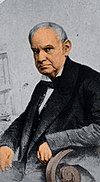 | Vicente López y Planes (1785–1856) | 3 February 1852 | 6 April 1852 | — | Governor of Buenos Aires Province. Interim. From 6 April through 26 July 1852 remained as Governor of Bueros Aires Province, but without national powers. | ||
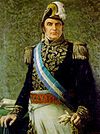 | Justo José de Urquiza (1801–1870) | 6 April 1852 | 31 May 1852 | Federal | Governor of Entre Ríos Province in charge of the foreign relations of the Confederation. | ||
Provisional Director of the Argentine Confederation (1852–1854)
| Portrait | Name (Birth–Death) | Term of office | Political party | Notes | R. | ||
|---|---|---|---|---|---|---|---|
| Start | End | ||||||
 | Justo José de Urquiza (1801–1870) | 31 May 1852 | 5 March 1854 | Federal | Simultaneously, Governor of Entre Ríos Province and of Buenos Aires Province (from 26 July 1852 to 4 September 1852). On 11 September 1852, the Province of Buenos Aires seceded from the Confederation as the State of Buenos Aires. On 1 May 1853, the current Constitution of Argentina was ratified by all the provinces, except from Buenos Aires. | [30] | |
Presidents of the Confederation (1854–1861)
| Portrait | Name (Birth–Death) | Term of office | Elections | Political party | Notes | Vice President | R. | ||
|---|---|---|---|---|---|---|---|---|---|
| Start | End | ||||||||
 | Justo José de Urquiza (1801–1870) | 5 March 1854 | 5 March 1860 | 1853 | Federal | Indirect elections. First constitutional President of Argentina. The reincoporation of the State of Buenos Aires was negotiated after the 1859 Battle of Cepeda in the Pact of San José de Flores. | Salvador María del Carril | [30] | |
 | Santiago Derqui (1809–1867) | 5 March 1860 | 5 November 1861 | 1860 | Indirect elections. On 18 October 1860, a Constitutional reform is adopted, proclaiming the Argentine Republic. Resigned after the failure of the Pact of San José de Flores and the national government defeat to Buenos Aires Province in the Battle of Pavón. | Juan Esteban Pedernera | [31] | ||
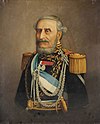 | Juan Esteban Pedernera (1796–1886) | 5 November 1861 | 12 December 1861 | Unitarian [citation needed] | Vice President under Derqui, assumed the presidency after his resignation. Resigned on the dissolution of the national government. | Vacant | [31] | ||
Argentine Republic (1861–present)
Presidents (1861–present)
| Portrait | Name (Birth–Death) | Term of office | Elections | Political party (Coalition) | Notes | Vice President | R. | ||
|---|---|---|---|---|---|---|---|---|---|
| Start | End | ||||||||
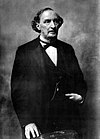 | Bartolomé Mitre (1821–1906) | 12 December 1861 | 12 April 1862 | — | Liberal | Governor of Buenos Aires Province de facto in charge of the national government after the Battle of Pavón and the resignation of Juan Esteban Pedernera. During the following months, the provinces gave Mitre different powers.[note 1] | Vacant | [32] | |
| 12 April 1862 | 2 June 1862 | Appointed himself by decree as "Governor of Buenos Aires Province in charge of the National Executive Power". | [33] | ||||||
| 2 June 1862 | 12 October 1862 | The National Congress appointed the Governor of Buenos Aires as the person in charge of the National Executive Power until elections were held. | [34] | ||||||
| 12 October 1862 | 12 October 1868 | 1862 | Liberal Nacionalist | Indirect elections with Mitre as the only candidate. First president of the unified country. Waged the War of the Triple Alliance. | Marcos Paz (Died 2 January 1868) | [35] | |||
| Vacant | |||||||||
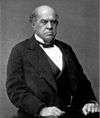 | Domingo Faustino Sarmiento (1811–1888) | 12 October 1868 | 12 October 1874 | 1868 | — | Indirect elections. Ended the War of the Triple Alliance. | Adolfo Alsina | [35] | |
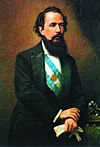 | Nicolás Avellaneda (1837–1885) | 12 October 1874 | 12 October 1880 | 1874 | National ↓ PAN | Indirect elections. Federalization of Buenos Aires City in September 1880. | Mariano Acosta | [35] | |
 | Julio Argentino Roca (1843–1914) | 12 October 1880 | 12 October 1886 | 1880 | PAN | Indirect elections. First term. End of the Argentine Civil Wars. | Francisco Bernabé Madero | [36] | |
 | Miguel Ángel Juárez Celman (1844–1909) | 12 October 1886 | 6 August 1890 | 1886 | PAN | Indirect elections. Resigned following the Revolution of the Park. | Carlos Pellegrini | [37] | |
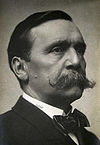 | Carlos Pellegrini (1846–1906) | 6 August 1890 | 12 October 1892 | PAN | Vice President under Juárez Celman, assumed the presidency after his resignation. Finished the presidential period 1886–1892. | Vacant | [37] | ||
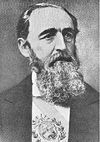 | Luis Sáenz Peña (1822–1907) | 12 October 1892 | 22 January 1895 | 1892 | PAN | Indirect elections. Government victory in the Revolution of 1893. Resigned. | José Evaristo Uriburu | [38] | |
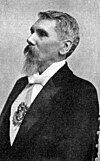 | José Evaristo Uriburu (1831–1914) | 22 January 1895 | 12 October 1898 | PAN | Vice President under Sáenz Peña, assumed the presidency after his resignation. Finished the presidential period 1892–1898. | Vacant | [38] | ||
 | Julio Argentino Roca (1843–1914) | 12 October 1898 | 12 October 1904 | 1898 | PAN | Indirect elections. Second term. | Norberto Quirno Costa | [39] | |
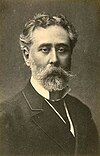 | Manuel Quintana (1835–1906) | 12 October 1904 | 12 March 1906 † | 1904 | PAN | Indirect elections. Government victory in the Revolution of 1905. Died in office. | José Figueroa Alcorta | [40] | |
 | José Figueroa Alcorta (1860–1931) | 25 January 1906 | 12 March 1906 | PAN | Vice President under Quintana. Acting president during his illness. | Himself | [40] | ||
| 12 March 1906 | 12 October 1910 | Vice President under Quintana, assumed the presidency after his death. Finished the presidential period 1904–1910. | Vacant | ||||||
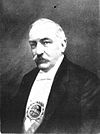 | Roque Sáenz Peña (1851–1914) | 12 October 1910 | 9 August 1914 † | 1910 | PAN Modernist | Indirect elections. Promoted the Sáenz Peña law, which allowed secret, universal and mandatory suffrage. Died in office. | Victorino de la Plaza | [41] | |
 | Victorino de la Plaza (1840–1919) | 9 August 1914 | 12 October 1916 | PAN | Vice President under Sáenz Peña, assumed the presidency after his death. Finished the presidential period 1910–1916. | Vacant | [41] | ||
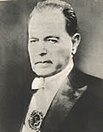 | Hipólito Yrigoyen (1852–1933) | 12 October 1916 | 12 October 1922 | 1916 | UCR | Free indirect elections. First president elected under the Sáenz Peña law. First term. Maintained neutrality during World War I. | Pelagio Luna (Died 25 June 1919) | [42] | |
| Vacant | |||||||||
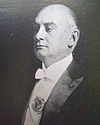 | Marcelo Torcuato de Alvear (1868–1942) | 12 October 1922 | 12 October 1928 | 1922 | UCR | Free indirect elections. | Elpidio González | [42] | |
 | Hipólito Yrigoyen (1852–1933) | 12 October 1928 | 6 September 1930 | 1928 | UCR | Free indirect elections. Second term, ousted from office by a coup d'état. | Enrique Martínez | [43] | |
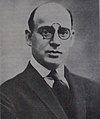 | Enrique Martínez (1887–1938) | 5 September 1930 | 6 September 1930 | — | UCR | Vice President under Yrigoyen. Acting president during his illness. Ousted from office by a coup d'état. | Himself | ||
 | José Félix Uriburu (1868–1932) | 6 September 1930 | 20 February 1932 | — | Military | First coup d'état in modern Argentine history. Beginning of the Infamous Decade. Called for elections. | Enrique Santamarina (Resigned 20 October 1930) | [44] | |
| Vacant | |||||||||
 | Agustín Pedro Justo (1876–1943) | 20 February 1932 | 20 February 1938 | 1931 | UCR (Concordancia) | Indirect elections held with fraud and with the UCR barred from elections. | Julio Argentino Pascual Roca | [6] [45] | |
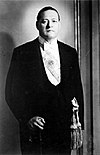 | Roberto Marcelino Ortiz (1886–1942) | 20 February 1938 | 27 June 1942 | 1937 | UCR-A (Concordancia) | Indirect elections held with fraud. Resigned for health reasons, died one month later. | Ramón Castillo | [7] [46] | |
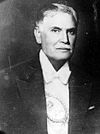 | Ramón Castillo (1873–1944) | 3 July 1940 | 27 June 1942 | PDN (Concordancia) | Vice President under Ortiz. Acting president during his illness. | Himself | [7] | ||
| 27 June 1942 | 4 June 1943 | Vice President under Ortiz, assumed the presidency after his resignation. Deposed in a coup d'état. End of the Infamous Decade. | Vacant | ||||||
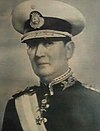 | Arturo Rawson (1885–1952) | 4 June 1943 | 7 June 1943 | — | Military | Coup d'état. Beginning of the Revolution of '43. Ousted from office. | [47] [7] | ||
 | Pedro Pablo Ramírez (1884–1962) | 7 June 1943 | 9 March 1944 | — | Military | Coup d'état. On 25 February 1944, Ramírez temporarily delegated powers to Edelmiro Farrell. Resigned. | Sabá Sueyro (Died 15 October 1943) | [7] | |
| Edelmiro Julián Farrell | |||||||||
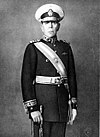 | Edelmiro Julián Farrell (1887–1980) | 25 February 1944 | 9 March 1944 | — | Military | Vice President under Ramírez. Acting president. | Himself | [7] | |
| 9 March 1944 | 4 June 1946 | Declared war on the Axis powers. Called for elections. End of the Revolution of '43. | Vacant | ||||||
| Juan Perón (8 July 1944–10 October 1945) | |||||||||
| Juan Pistarini | |||||||||
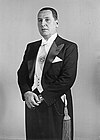 | Juan Perón (1895–1974) | 4 June 1946 | 4 June 1952 | 1946 | Labour (UCR-JR) (Independent) | Free indirect elections. First term. Reelection enabled by the Constitution of 1949. | Hortensio Quijano (Died 3 April 1952) | [48] | |
| Vacant | |||||||||
| 4 June 1952 | 19 September 1955 | 1951 | Peronist | Free direct elections. Second term. First election to allow women's suffrage. Victory with 62.49% of votes, highest victory in Argentine elections. Ousted from office by a coup d'état. | |||||
| Alberto Teisaire (7 May 1954–16 September 1955) | |||||||||
| Vacant | |||||||||
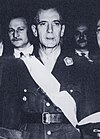 | Eduardo Lonardi (1896–1956) | 20 September 1955 | 23 September 1955 | — | Military | Coup d'état. Beginning of the Revolución Libertadora. By decree appointed himself as "Provisional President of the Nation". | [49] | ||
| 23 September 1955 | 13 November 1955 | Lonardi is sworn in as President. Ousted from office. | Isaac Rojas | ||||||
 | Pedro Eugenio Aramburu (1903–1970) | 13 November 1955 | 1 May 1958 | — | Military | Coup d'état. The 1949 Constitution is repealed and the 1853 Constitution is restored. End of the Revolución Libertadora. Called for elections with Peronism barred from elections. | [49] | ||
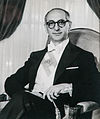 | Arturo Frondizi (1908–1995) | 1 May 1958 | 29 March 1962 | 1958 | UCRI | Indirect elections with Peronism barred from elections. Ousted from office by a coup d'état. | Alejandro Gómez (Resigned 18 November 1958) | [50] | |
| Vacant | |||||||||
 | José María Guido (1910–1975) | 29 March 1962 | 12 October 1963 | — | UCRI | Provisional President of the Senate exercising the Executive Power, as the civil procedures to replace the deposed president were followed and Vice President Alejandro Gómez had resigned in 1958. | [51] [50] | ||
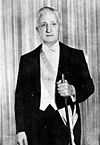 | Arturo Umberto Illia (1900–1983) | 12 October 1963 | 28 June 1966 | 1963 | UCRP | Indirect elections with Peronism barred from elections. Ousted from office by a coup d'état. | Carlos Humberto Perette | [52] | |
 | Junta of Commanders of the Armed Forces | 28 June 1966 | 29 June 1966 | — | Military | Coup d'état Beginning of the Argentine Revolution. Members of the Junta:
| Vacant | ||
 | Juan Carlos Onganía (1914–1995) | 29 June 1966 | 8 June 1970 | — | Military | Coup d'état. Ousted from office. | [52] | ||
 | Junta of Commanders of the Armed Forces | 8 June 1970 | 18 June 1970 | — | Military | Coup d'état. Members of the Junta:
| |||
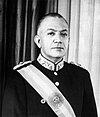 | Roberto Marcelo Levingston (1920–2015) | 18 June 1970 | 23 March 1971 | — | Military | Appointed by the Military Junta. Ousted from office. | [52] | ||
 | Junta of Commanders of the Armed Forces | 23 March 1971 | 26 March 1971 | — | Military | Coup d'état Members of the Junta:
| |||
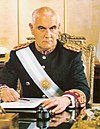 | Alejandro Agustín Lanusse (1918–1996) | 26 March 1971 | 25 May 1973 | — | Military | Appointed by the Military Junta. End of the Argentine Revolution. Called for elections. Peronism ban lifted. | |||
 | Héctor José Cámpora (1909–1980) | 25 May 1973 | 13 July 1973 | March 1973 | PJ (FREJULI) | Free direct elections. Because no candidate was able to get 50% of the votes needed to win, a runoff should have taken place between Cámpora and Ricardo Balbín, but Balbín decided to withdraw his candidacy, making Cámpora president. First Peronist president after the ban. Cámpora annulled the ban that remained specifically over Juan Perón, and resigned along with his Vice President. | Vicente Solano Lima | [53] | |
 | Raúl Alberto Lastiri (1915–1978) | 13 July 1973 | 12 October 1973 | — | PJ (FREJULI) | President of the Chamber of Deputies exercising the Executive Power. Alejandro Díaz Bialet, President of the Senate and ahead of Lastiri in the succession line, was on a diplomatic mission in Africa at that time. | Vacant | [54] [53] | |
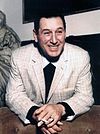 | Juan Perón (1895–1974) | 12 October 1973 | 1 July 1974 † | Sept. 1973 | PJ (FREJULI) | Free direct elections. Third term. Died in office. | Isabel Perón | [53] | |
 | Isabel Perón (born 1931) | 29 June 1974 | 1 July 1974 | PJ (FREJULI) | First Lady and Vice President under Juan Perón. Acting president during his illness. | Herself | [55] | ||
| 1 July 1974 | 24 March 1976 | Vice President of Juan Perón, assumed the presidency after his death. First female president in the Americas. Ousted from office by a coup d'état. | Vacant | ||||||
 | Military Junta | 24 March 1976 | 29 March 1976 | — | Military | Coup d'état. Beginning of the National Reorganization Process. Members of the Junta: | |||
 | Jorge Rafael Videla (1925–2013) | 29 March 1976 | 29 March 1981 | — | Military | Coup d'état. President of the Military Junta. Longest government of a de facto ruler. | [56] | ||
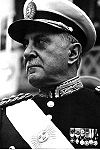 | Roberto Eduardo Viola (1924–1994) | 29 March 1981 | 11 December 1981 | — | Military | Appointed by Videla as President of the Military Junta. Powers and duties suspended on 21 November 1981 due to health problems. Ousted from office. | [56] | ||
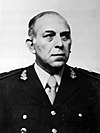 | Horacio Tomás Liendo (1924–2007) | 21 November 1981 | 11 December 1981 | — | Military | Appointed by the Military Junta. Acting president during Viola suspension. | |||
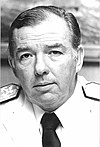 | Carlos Lacoste (1929–2004) | 11 December 1981 | 22 December 1981 | — | Military | Appointed by the Military Junta. Interim. | |||
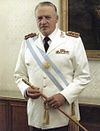 | Leopoldo Galtieri (1926–2003) | 22 December 1981 | 18 June 1982 | — | Military | Appointed by the Military Junta. Waged the Falklands War. Ousted from office. | [56] | ||
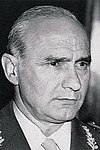 | Alfredo Oscar Saint Jean (1926–1987) | 18 June 1982 | 1 July 1982 | — | Military | Appointed by the Military Junta. Interim. | |||
 | Reynaldo Bignone (1928–2018) | 1 July 1982 | 10 December 1983 | — | Military | Appointed by the Military Junta. End of the National Reorganization Process. Called for elections. | [56] | ||
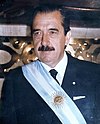 | (Presidency) Raúl Alfonsín (1927–2009) | 10 December 1983 | 8 July 1989 | 1983 | UCR | Free indirect elections. The 1989 presidential elections were anticipated. Resigned during the transition and gave power to Carlos Menem six months in advance. | Víctor Hipólito Martínez | [57] | |
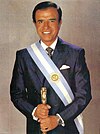 | (Presidency) Carlos Menem (1930–2021) | 8 July 1989 | 8 July 1995 | 1989 | PJ (FREJUPO) | Free indirect elections. First term. The 1994 amendment reduced the presidential term from 6 to 4 years and allowed a single consecutive reelection. | Eduardo Duhalde (Resigned 10 December 1991) | [58] | |
| Vacant | |||||||||
| 8 July 1995 | 10 December 1999 | 1995 | PJ (UCeDe) | Free direct elections. Second term. His term was extended to 10 December 1999 according to the Tenth Temporary Provision of the Constitution of 1994. | Carlos Ruckauf | ||||
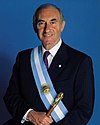 | (Presidency) Fernando de la Rúa (1937–2019) | 10 December 1999 | 21 December 2001 | 1999 | UCR (Alianza) | Free direct elections. Faced a severe economic crisis. Resigned after the December 2001 riots. Because his Vice President Carlos Álvarez had resigned in October 2000, the Congress Assembled selected a new President. | Carlos Álvarez (Resigned 6 October 2000) | [59] | |
| Vacant | |||||||||
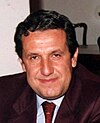 | Ramón Puerta (born 1951) | 21 December 2001 | 23 December 2001 | — | PJ | Provisional President of the Senate exercising the Executive Power. | [60] | ||
 | Adolfo Rodríguez Saá (born 1947) | 23 December 2001 | 30 December 2001 | — | PJ | Elected by the Congress for three months, with instructions to call for elections. Resigned. | [61] | ||
 | Eduardo Camaño (born 1946) | 30 December 2001 | 2 January 2002 | — | PJ | President of the Chamber of Deputies exercising the Executive Power. | [62] | ||
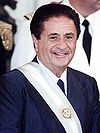 | Eduardo Duhalde (born 1941) | 2 January 2002 | 25 May 2003 | — | PJ | Elected by the Congress, with instructions to complete De la Rúa's term. Called early elections for 27 April 2003. | [61] | ||
 | (Presidency) Néstor Kirchner (1950–2010) | 25 May 2003 | 10 December 2007 | 2003 | PJ (FPV) | Free direct elections. Initially completed the remaining months of De la Rúa's term until 10 December 2003 then began his own mandate. Kirchner finished second to Carlos Menem in the first round and because no one was able to get 45% of the votes needed to win, a runoff should have taken place, but Menem decided to withdraw his candidacy, making Kirchner president. | Daniel Scioli | [63] | |
 | (Presidency) Cristina Fernández de Kirchner (born 1953) | 10 December 2007 | 10 December 2011 | 2007 | PJ (FPV) | Free direct elections. First term. First female president of Argentina elected as head of the list. | Julio Cobos | [64] | |
| 10 December 2011 | 10 December 2015 | 2011 | PJ (FPV) | Free direct elections. Second term. By judicial ruling, her mandate ended 9 December 2015 at midnight. | Amado Boudou | [65] | |||
 | Federico Pinedo (born 1955) | 10 December 2015 | — | PRO (Cambiemos) | Provisional President of the Senate exercising the Executive Power. Acting president from 00:00 hs. until Macri's swearing in at 11:45 hs. | Vacant | [65] | ||
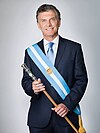 | (Presidency) Mauricio Macri (born 1959) | 10 December 2015 | 10 December 2019 | 2015 | PRO (Cambiemos) | Free direct elections. First president elected in a ballotage, defeating Daniel Scioli. Although his mandate begun on 10 December 2015 at 00:00 hs., it was only after he swore in the Congress at 11:45 hs. that he took office as President. | Gabriela Michetti | [65] | |
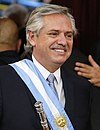 | (Presidency) Alberto Fernández (born 1959) | 10 December 2019 | 10 December 2023 | 2019 | PJ (FdT) | Free direct elections. | Cristina Fernández de Kirchner | ||
 | (Presidency) Javier Milei (born 1970) | 10 December 2023 | Incumbent | 2023 | PL (LLA) | Free direct elections. | Victoria Villarruel | ||
Timeline of head of states of Argentina by individual

Timeline of head of states of Argentina by affiliation
See also
References
Notes
Bibliography
- Mendelevich, Pablo (2010). El Final (in Spanish). Buenos Aires: Ediciones B. ISBN 978-987-627-166-0.
- Rosa, José María (1974). Historia Argentina (in Spanish). Buenos Aires: Editorial Oriente S.A.
- Abal Medina (h.), Juan; Suárez Cao, Julieta (August 2003). "Análisis crítico del sistema electoral argentino. Evolución histórica y desempeño efectivo". Revista de Ciencias Sociales (in Spanish). 14. Bernal: National University of Quilmes.
External links
- Rulers.org — Argentina list of rulers for Argentina
